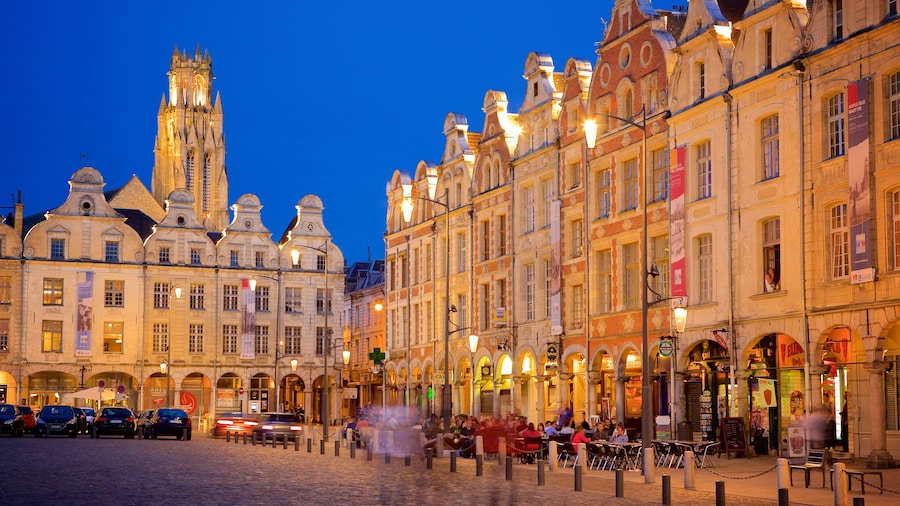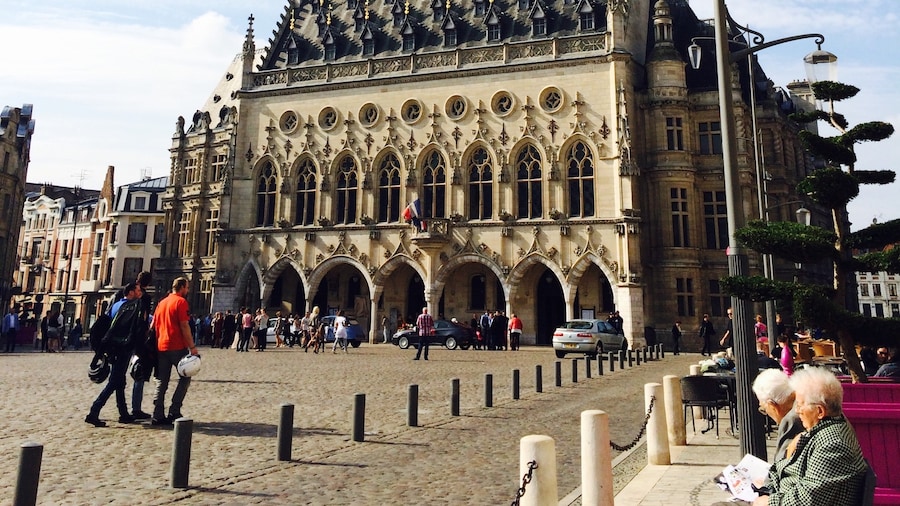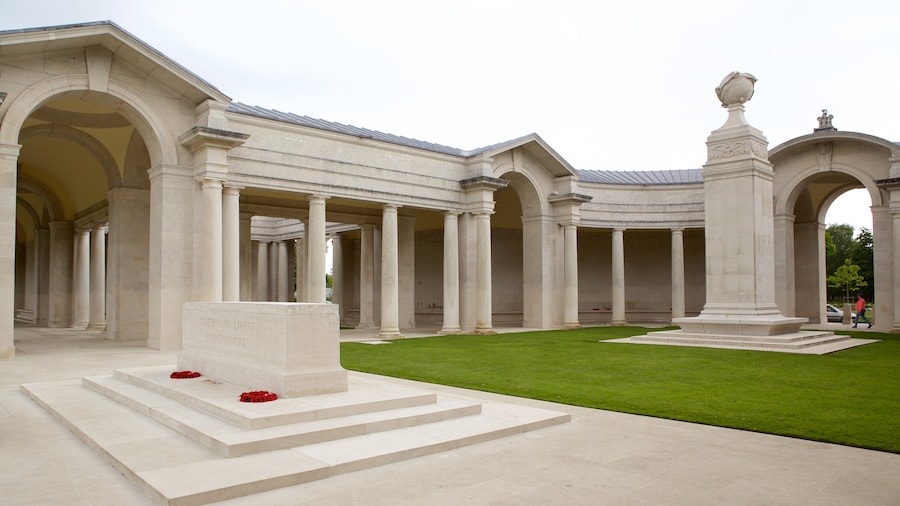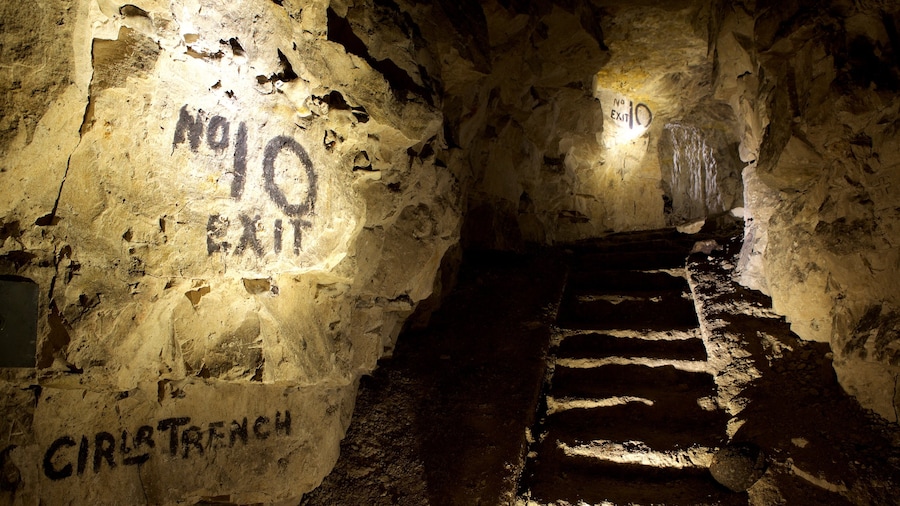Arras is a 2,000-year-old city surrounded by the Artois and Ternois hills near Calais in northern France. Its rich history includes world wars and prehistoric settlements. Many archeological ruins have been found on the banks of the River Scarpe, which runs across the north of the city. Arras is also known for its ancient tapestries and underground wartime passages known as “boves.”
See the 246-foot (75-metre) Arras Bell Tower, which is a UNESCO site. Climb its steps for a panoramic view of the city. Admire the landmark’s gothic design and tall spire with a gold statue of a lion holding a sun. Construction began on the tower in 1463 and it was completed almost a century later. Learn about its use as a watchtower in times of war.
Visit the Town Hall beneath the tower. In the main hall, see the 164-foot-long (50-metre) painting by the artist, Hoffbauer.
Take a solemn trip to the world’s largest French military cemetery on Lorette Hill, with 20,000 graves. The landmark memorializes the soldiers who lost their lives in World War I. It is the site of several key 1914 battles which led to the deaths of 100,000 soldiers. Visit the basilica and the lighthouse that stand over the cemetery.
See the Canadian War Memorial of Vimy, which overlooks the Canadian battlefield of 1917.
Stroll around La Grand Place and La Petite Place, two central squares with historical architecture dating back to the 1700s. The Arras Cathedral nearby is a gothic structure originally built in the 11th century.
The Celts knew the city during the Iron Age as Nemetocenna, from their term for “Sacred Space.” The letter “s” at the end of Arras is pronounced, unlike many French words where it is silent.
The Arras region enjoys warm summers and mild to cold winters. Many travellers visit Arras on the way to Paris from London, as the port of Calais is connected by train and ferry passages to the southern coast of England.

















